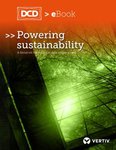In today's world, businesses and organizations increasingly turn to hybrid ecosystems to maximize sustainability and reliability while reducing costs.
Hybrid ecosystems combine traditional, fossil fuel-based power sources with renewable energy sources such as solar or wind power, battery storage systems (BESS), and intelligent Power Management Systems (PMS).
Operators can get the most out of their resources by using these multiple sources in an integrated system while providing reliable uptime to customers and stakeholders.
Such hybrid ecosystems provide numerous benefits, including improved efficiency, reduced emissions, increased sustainability goals compliance, greater flexibility in responding to changes in load demand patterns over time, cost savings through better use of available resources ‒ both human and material ‒ as well as improved safety for personnel working with the system.
Changes to existing power solutions need to be phased in gradually
When transitioning from traditional power sources to hybrid ecosystems, it is essential to take a gradual approach to ensure the system remains reliable and sustainable while avoiding costly mistakes or downtime.
Changes may need to be phased in gradually. Investments may need to be divided over several budget periods, and a cautious approach when carrying out system upgrades or redesigns can help ensure uptime.
Fortunately, hybrid ecosystems are not all or nothing at all. System components can be updated at the operator's pace with flexible, scalable, and re-configurable controllers interlinked in an intelligent PMS capable of handling fossil and renewable power sources and storage.
An intelligent PMS can manage fossil and renewable power sources while optimizing genset operation
The best solution to managing the power sources in a hybrid ecosystem is an intelligent power management system (PMS) based on a network of decentralized controllers.
A PMS automatically manages and optimizes the operation of the hybrid ecosystem based on operator requirements. Each controller handles one power source, for example, a grid connection, genset, wind turbine, or BESS (battery energy storage system).
Status information about the current load demand and the current power production of each connected source is continuously exchanged between the controllers, and they use this information to coordinate which power source to prioritize based on the user's requirements.
Advantages of an intelligent PMS
- Maximize green power penetration: The PMS can be set up to prioritize renewables whenever possible. For example, on a bright, windy day, the PMS can cover the load demand using wind turbines while charging a BESS from the PV panels.
- Optimizing genset operation: The PMS can control and coordinate the power sources in the hybrid ecosystem so that each genset is operated optimally.
- Ensuring resilience: The PMS constantly monitors the load and all connected power sources and ensures that the required power for the load point is always available by switching power sources on or off as required. A PMS will often have advanced features such as minimum genset load or spinning reserve that simultaneously help attain the greatest possible security of supply and maximum green power penetration.
- Accommodating all power source types: Some intelligent PMS solutions can handle and coordinate all types of power sources: grid connections, gensets, PV panels, wind, hydro, gas turbines, and BESS.
- Enabling easy system reconfigurations: The hybrid ecosystem can be scaled up or down with an intelligent PMS. Intelligent PMS solutions will often automatically onboard a new controller and its power source in the power management logic and ensure your objectives are met.
Several of these benefits can be achieved simultaneously, such as if the PMS is needed to start up one or more gensets it can combine them with other available power sources to optimize genset operations and lower fuel consumption and emissions, again combining sustainability with reliability.
Operators must opt for future-proof configurable controllers to accommodate any reconfiguration or change within their hybrid ecosystems. The PMS should also be set up with flexible, scalable controllers interlinked to maximize the system's benefits.
Furthermore, operators should monitor and adjust system parameters regularly to ensure their hybrid eco-systems operate optimally. Following these steps, operators can maximize sustainability and reliability while ensuring customer satisfaction and cost savings.
Sustainability and reliability are not mutually exclusive, and operators do not need to go for 100 percent sustainability from the outset
Hybrid ecosystems provide a great way to combine traditional, fossil fuel-based power sources with renewable energy sources such as solar or wind power to reduce costs while providing reliable uptime for customers and stakeholders.
By leveraging an intelligent Power Management System (PMS) that can manage fossil and renewable power sources while optimizing genset operation, operators can maximize their resources while ensuring customer satisfaction.
There is no doubt that power professionals need to increase the share of renewables in the energy mix. Still, that need must be balanced against operational considerations, and the hybrid ecosystem must deliver expected performance to realize operator goals.
For more information, read our white paper: Achieving carbon neutrality with hybrid ecosystems: Strategies for combining sustainability with reliability.
More from Vertiv
-

Sponsored Liquid cooling in the artificial intelligence landscape: Time to gear up
Why data center operators must be ready to turn to liquid cooling to stay competitive in the age of generative AI
-

Sponsored What happens when you introduce liquid cooling into an air-cooled data center?
Quantifying liquid cooling’s impact on power usage effectiveness (PUE) and energy consumption when introduced to an air-cooled data center
-

Sponsored The next step in prefab: Are hyperscalers going hybrid?
Discussing hybrid design in hyperscale data centers



